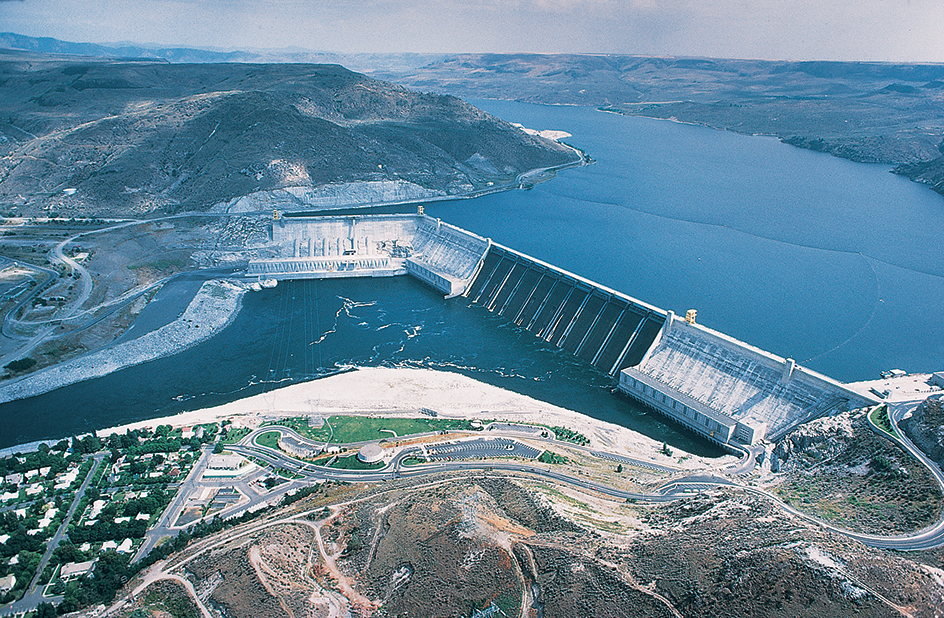Water power is a valuable source of energy. When such fuels as coal, oil, and even nuclear fuels are burned up as a source of energy, they cannot be reused. But water used as a source of energy is not used up. The earth’s constant flow of water can be harnessed to produce useful mechanical and electric power.
Loading the player...Water wheel
Wheels mounted on a frame over a river were the first devices used to harness water power. Blades around the outside of the wheels dipped into the river, and the flowing water striking the blades turned the wheels. Some ancient civilizations connected water wheels to grinding stones and used the power to mill grain.
During the Industrial Revolution, large water wheels were used to run machinery in factories. The power was not completely reliable, however. Floodwaters created more power than was needed, and droughts left the factories without power. By the end of the 1800’s, the steam engine had replaced water power in most factories.
The first water-powered plant for generating electricpower was built in Appleton, Wisconsin, in 1882. This hydroelectric plant established water power as a major source of electric power. Hydroelectric power is now used all over the world.
Today, almost all water power is used to generate electric power. Many hydroelectric plants are combined with thermal power plants (those using fuel). With this combination, the thermal plant can supply power if the hydroelectric plant is affected by drought. Hydroelectric plants are especially useful for producing electric power during periods when it is in great demand, because they can be turned on and off rapidly.
The mechanics of water power.
Water flowing from a higher place to a lower place—as in a river, a waterfall, or a dam—is most often used to produce electric power. People use the effects of gravity (the attraction the earth exerts on an object) pulling the water downward when they harness water for power. For example, in the customary system of measurement, a cubic foot of water weighs 62.4 pounds. The pull of gravity then creates a pressure of 6,240 pounds per square foot at the base of a body of water 100 feet tall. If this water were released from a nozzle at the bottom of its source, the stream of water would travel at a speed of about 80 feet per second. The force of this stream striking the blades of a water wheel would cause the wheel to turn, producing useful mechanical energy.

Researchers are also developing several different technologies that can use waves to produce electric power. These technologies include devices that use the rise of waves to compress air that then turns a turbine, and floating devices that drive pistons as the water level rises and falls.
World water power production.
The potential water power of the world is about 21/4 billion kilowatts of electric power. This is a very general estimate, because the flow of many large rivers has not been measured. Of this potential, there is about 11/4 billion kilowatts of energy capacity.
Countries with the most energy capacity include Brazil, Canada, China, Russia, and the United States. The potential of many countries in Asia, Africa, and Latin America is just beginning to be developed.
The world’s largest hydroelectric power plant, the Three Gorges Dam on the Yangtze River in China, has a capacity of over 22 million kilowatts. The Itaipú plant of Brazil and Paraguay on the Paraná River has a capacity of about 14 million kilowatts. The Guri power plant, on the Caroni River in Venezuela, can produce 10 million kilowatts. The Grand Coulee on the Columbia River in the United States has a capacity of about 7 million kilowatts, and the Sayano-Shushensk on the Yenisey River in Russia can produce about 61/2 million kilowatts.
